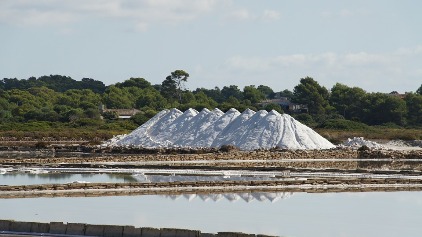Salt pans spread over 1,781 acres (721 hectares) in Mumbai are set to be opened up for development. The land, whose current market value will be around Rs 53,000 crores, is almost twice the size of Mumbai’s prime commercial hub, Bandra-Kurla Complex (BKC), which is spread over 914 acres.
Salt pans are crucial to Mumbai’s ecology, as according to a 2016 Mumbai Metropolitan Reg-ion Development Authority report, they safeguard the city against floods.
The state, however, will be soon able to make its own laws for the use and development of salt pans, after it gave its consent to the Centre to put salt pans in the concurrent list in Schedule VII of the Constitution. Currently, all issues related to salt pans come under the Union commerce and industry ministry.
Maharashtra has nearly 13,000 acres of salt pans, with 5,300 acres in Mumbai, followed by around 2,000 acres in Vasai and 2,000 acres in Palghar.
Of the 5,300 acres in Mumbai, the city’s Development Plan (DP) 2034 allows for 1,781 acres to be developed. However, it is not yet clear if the state will open up the entire 1,781 acres for construction, as a part of it may come under environment regulations.
For years, the state has been pushing to open up salt pans for housing projects, but the proposal had been stuck owing to contentious issues, such as the land-sharing formula between the Centre and the state and ongoing litigation.
The state will move ahead only after the Centre makes the amendment, state officials involved in the process said on Monday.
According to the letter issued by the revenue department, on behalf of the state government, on May 10, 2019, Maharashtra government welcomes the proposal to transfer the subject of ‘salt’ to the concurrent list in the Schedule VII of the constitution and has no objection to the same. It was issued in response to a query raised by the joint secretary and acting salt commissioner, seeking the state’s views over incorporating salt pans in the concurrent list.
In December 2015, the central government had sought views from states on the issue, following a recommendation from the committee of secretaries of the Centre. A senior official privy to the development said that the central government sought the response from all states and needed consent from two-thirds to take the decision to amend Schedule VII of the constitution. The amendment also needed to be approved by the Parliament. Once cleared, it will allow all the states to make laws related to use and development of salt pan lands.
Rajesh Vardhan, managing director, Vardhman Group, real estate firm, said the state’s consent was a positive development. He said that this government has taken up affordable housing on priority, when the city’s population is rapidly expanding. Housing has become a real challenge in the city and without land, it was impossible to achieve targets.
In Mumbai, salt pans are at Wadala in central Mumbai, Ghatkopar, Turbhe, Kanjurmarg, Bhandup, Nahur and Mulund in the eastern suburbs and Malvani, Dahisar in western suburbs. The extended suburbs, such as Mira-Bhayander and Virar in Palghar district, which has seen a real-estate boom over the past two decades also has salt pans.
The state government is keen on unlocking these plots and provisions for the same were also made in the development plan 2034. The DP had earmarked 321 acres (130 hectares) of salt pans to be used for affordable housing.
According to Gulam Zia, executive director, Knight Frank, real estate consultancy firm, the cost of the land varies as per location. For instance, in Mumbai, the estimated cost of the salt pan will be between Rs50 and Rs 70 crores/acre. In Vikhroli, it will be Rs35-50 crores/acre, Mira-Bhayander Rs 25-30 crores/acre and in an area like Vasai, it will be between 20-25 crores/acre.
Assuming the average cost of the land as Rs30 crores/acre, the cost of 721 hectares could be Rs53,430 crores. This is only the cost of the land. The prices will be increase significantly when the construction cost gets included with it.
The ownership of salt pans has been contested between the Centre and state for more than three decades, with the last suggestion coming from the UPA-I government, to share the land on a 50:50 basis between the state and the Centre. The Narendra Modi-led BJP government is reconsidering the issue and is also in favour of opening it up for development.
In 2017, the Union Ministry of Environment and Forests revised the Wetlands (Conservation and Management) Rules, 2017 and excluded salt pans from wetlands, which means these tracts in Mumbai could be open for development. Following this, the Mumbai Metropolitan Region Development Authority (MMRDA) started resurveying city’s salt pans to study if it was feasible for building affordable housing.
Meanwhile, the state government has set up a five-member committee of bureaucrats to study the proposal sent by a private developer to construct one lakh affordable houses in the salt pans in the Bhandup-Kanjurmarg belt in June this year.
The committee, led by additional chief secretary (finance), was asked to study the proposal and recommend a roadmap for it. It was also asked to decide on modalities such as lease conditions, permissible land use, premium to be charged on revamp and if housing stock can be taken as compensation and decide if the proposal is beneficial for the state government.
Source: Hindustan Times

